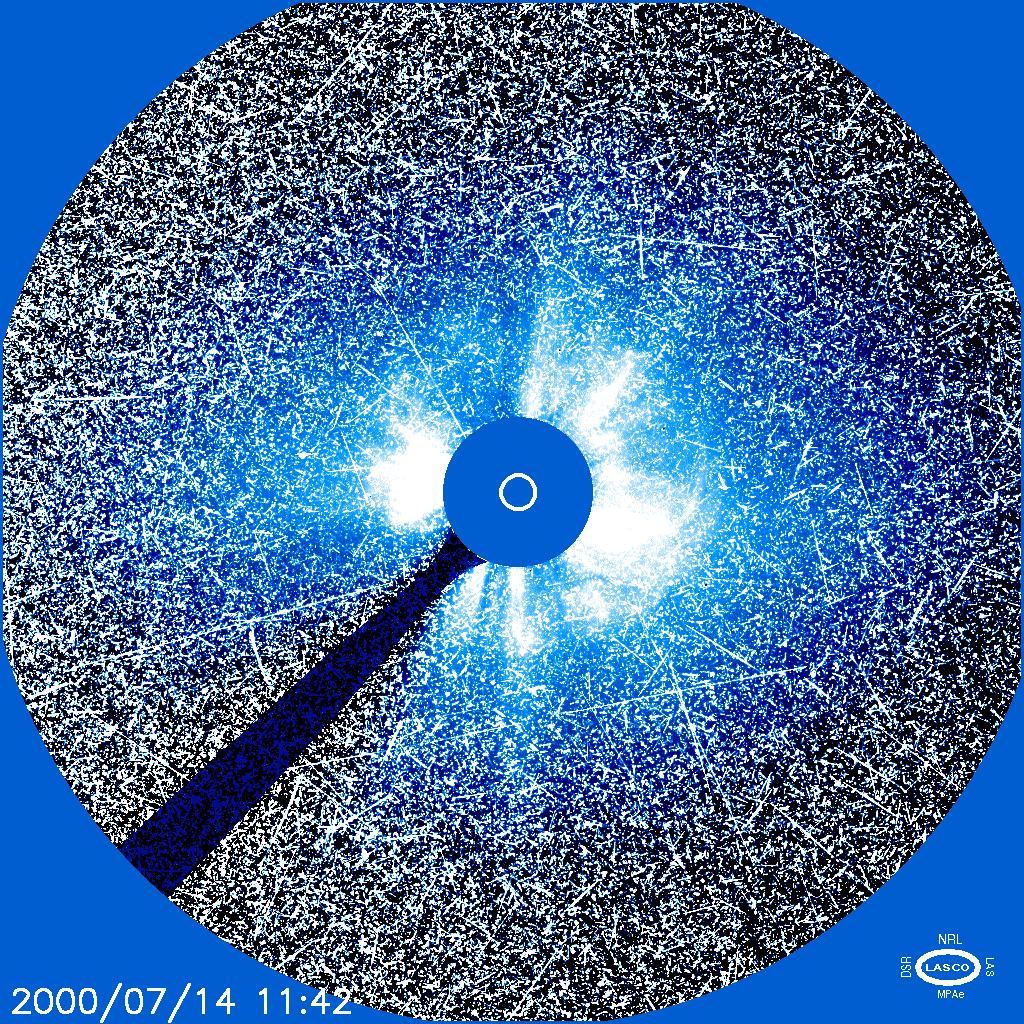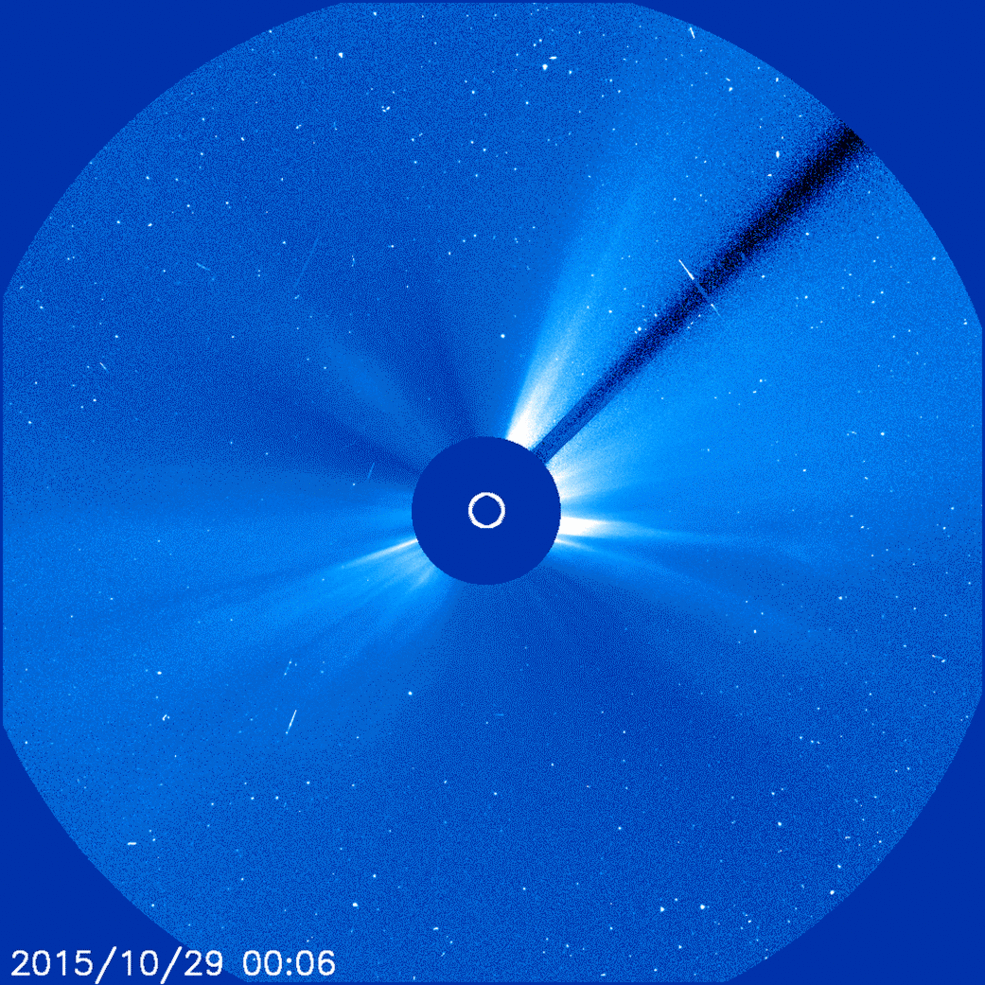Particle Storms
Caused by solar energetic particles (SEPs).
Snowing in Space?
SEPs created by solar flares and CMEs are very energetic bursts of particles that pose a major threat to the electronics and power systems of satellites.
The Earth’s atmosphere is normally a very good shield against energetic particles but during the strongest of these events particles can disrupt electronics in airplanes and even electronics on the ground. These particles can pose a significant health risk to airline crew and passengers. Particle storms can create the same atmospheric absorption effects as solar flares causing HF blackouts near the poles.


The flurry of what looks like snow in this video is actually a barrage of energetic particles. This is what’s known as a solar radiation storm, hitting an instrument onboard ESA/NASA’s Solar and Heliospheric Observatory, or SOHO, on Oct. 29, 2015.
These bursts of incredibly fast-moving protons and electrons are fairly common, but this particular event was interesting because they came from an unusual source: a low-level solar flare and two relatively slow coronal mass ejections, as opposed to the fast, strong eruptions that normally produce them.
Most energetic particles detected by our satellites—SOHO and NOAA’s Geostationary Operational Environmental Satellite, or GOES—are accelerated by coronal mass ejections, or CMEs, which are clouds of solar material hurtling out from the sun, and from extremely strong solar flares. When CMEs plow through space, they sweep up the particles in front of them, accelerating them up to incredible speeds.
In short, we expect strong particle storms from large and fast events. But in this case, the particles that flowed over SOHO in this image were accelerated by fairly slow CMEs, as well as a solar flare on the sun.
“Events on the sun can accelerate high-energy particles to very high speeds,” said Yari Collado-Vega, a space physicist at NASA’s Goddard Space Flight Center in Greenbelt, Maryland. “These solar-accelerated particles can get up to 80 percent of the speed of light.”
That these relatively small events caused such fast particles has to do, in part, with the fact that the active region that produced the flare on Oct. 28 is on the right side of the sun’s disk, an area that has an almost direct magnetic connection to Earth – due to the fact that the sun’s magnetic field lines curve as they extend away from the sun in conjunction with the sun’s rotation.
The result? A barrage of fast-moving particles aimed directly at Earth. This radiation cannot pass through Earth’s magnetic field and atmosphere to physically affect humans on the ground, however it does makes for a fascinating fireworks show seen by our sun-watching SOHO.
